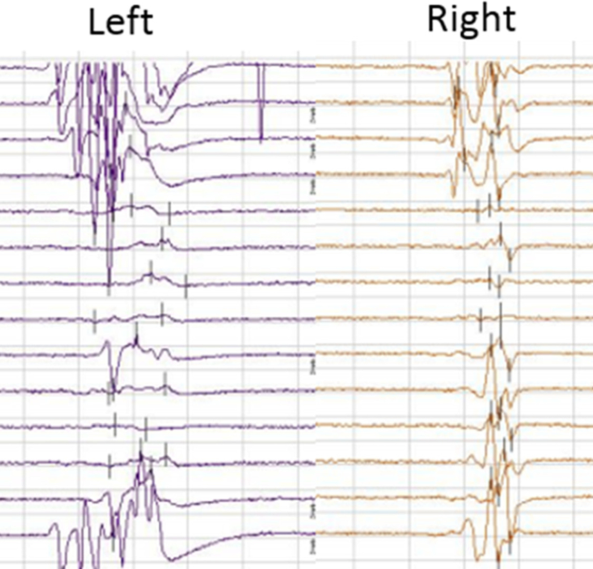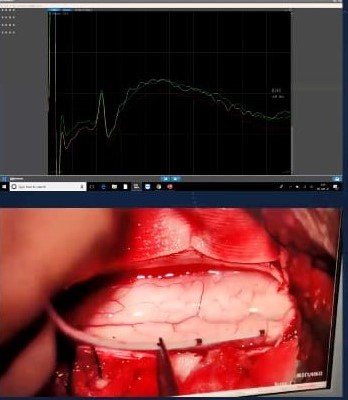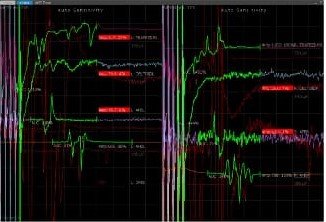
Brief about D wave .
- In intraoperative neurophysiological monitoring (IONM), D waves refer to direct cortical motor evoked potentials (D-waves). They are a type of evoked potential that originates directly from the motor cortex and travels along the corticospinal tract to activate the lower motor neurons in the spinal cord. D waves are typically elicited by transcranial electrical stimulation (TES) of the motor cortex during surgery.
- The presence of D waves during IONM is important because they provide real-time feedback about the integrity of the corticospinal tract, which is crucial for preserving motor function. Monitoring D waves allows neurophysiologists and surgeons to assess the functional integrity of the motor pathway during procedures that may involve manipulation or resection of structures near or within the spinal cord, such as tumor resections or spinal surgeries.
- If D waves are present and stable throughout the procedure, it indicates that the motor pathway is functioning properly, and the risk of postoperative motor deficits may be lower. However, if there are changes in the D wave amplitude or latency, it could signal potential damage or compromise to the corticospinal tract, prompting the surgical team to take appropriate measures to minimize the risk of postoperative neurological deficits.
- Overall, D wave monitoring in IONM is a valuable tool for helping surgeons preserve motor function and minimize the risk of neurological complications during neurosurgical procedures involving the spinal cord and adjacent structures.
D wave is present but motor evoked potentials (MEPs) show a drop in the context of an intramedullary spine tumor.

- it may indicate compression or damage to the motor pathways within the spinal cord. D waves are often used to assess the integrity of the corticospinal tract, which is a crucial pathway for motor function.
- An intramedullary spine tumor is a tumor located within the spinal cord itself, which can lead to compression of the surrounding neural structures, including the corticospinal tract. This compression can interfere with the transmission of motor signals and result in a decrease in MEP responses.
- The presence of a D wave indicates that the stimulation of the motor pathways at the level of the motor cortex is intact, but the drop in MEP responses suggests that the signal transmission along the corticospinal tract is compromised, likely due to the tumor’s effects on the spinal cord.
- This suggests that intra-medullary dissection can temporarily reduce intact LMN excitability to intact corticospinal tract input by disrupting background facilitation systems.

Interpreting the Scenario.
- When a D-wave is present but MEPs show a drop, it can be indicative of selective damage to the corticospinal tract.
- This phenomenon is often observed in cases of chronic damage to the corticospinal tract, resulting in desynchronization of the wave.
- When D-wave amplitude is reduced, but by less than 50%, recovery might also be due to secondary systems compensating for the loss of some corticospinal tract fibers.

conclusion.
- When there’s a tumor present within the spinal cord, it can disrupt the normal functioning of the spinal cord pathways, including the corticospinal tract. This disruption can lead to a decrease in MEPs, reflecting impaired transmission of signals from the cortex to the muscles.
- The presence of D waves indicates that there is still some degree of intact descending motor pathway, but the drop in MEPs suggests that there is significant impairment or compromise of motor function due to the tumor.
Management .
In this situation, it is important for the healthcare team to monitor the patient closely and consider appropriate management options. Treatment of intramedullary spine tumors often involves surgical intervention to relieve the compression on the spinal cord and possibly followed by radiation or chemotherapy, depending on the type of tumor.
Take home message.
Continued monitoring of MEP responses and other neurophysiological parameters can help assess the effectiveness of treatment and provide insight into the recovery of motor function following intervention.
Collaborating with a multidisciplinary team of healthcare professionals, including neurosurgeons, neurologists, and rehabilitation specialists, can help optimize the patient’s care and outcomes in the management of intramedullary spine tumors affecting motor function.
Related to this article.
https://neurointraoperative.com/wp-admin/post.php?post=1710&action=edit
Question.
D wave is transsynaptic response?
D wave is a potential of pyramidal or extrapyramidal fibers?.
What is the meaning of D wave intact but drop of MEP?
What is the interpretation scenario?
What is the correlation between MEP and D wave?.

1 thought on “When a D wave is present but motor evoked potentials (MEPs) show a drop in the context of an intramedullary spine tumor.”